KUALA LUMPUR, July 24 — Malaysia Airlines has introduced its newly refreshed Boeing 737-800 NG cabin as part of its sustainable effort. The new cabin which claims to offer a premium experience feature lightweight seats without in-flight entertainment (IFE) screens which will help to reduce the overall weight of the aircraft. As a result, the 737 aircraft with the new cabin is estimated to have an 8 per cent improvement on fuel burn per passenger which translates to lower carbon footprint.
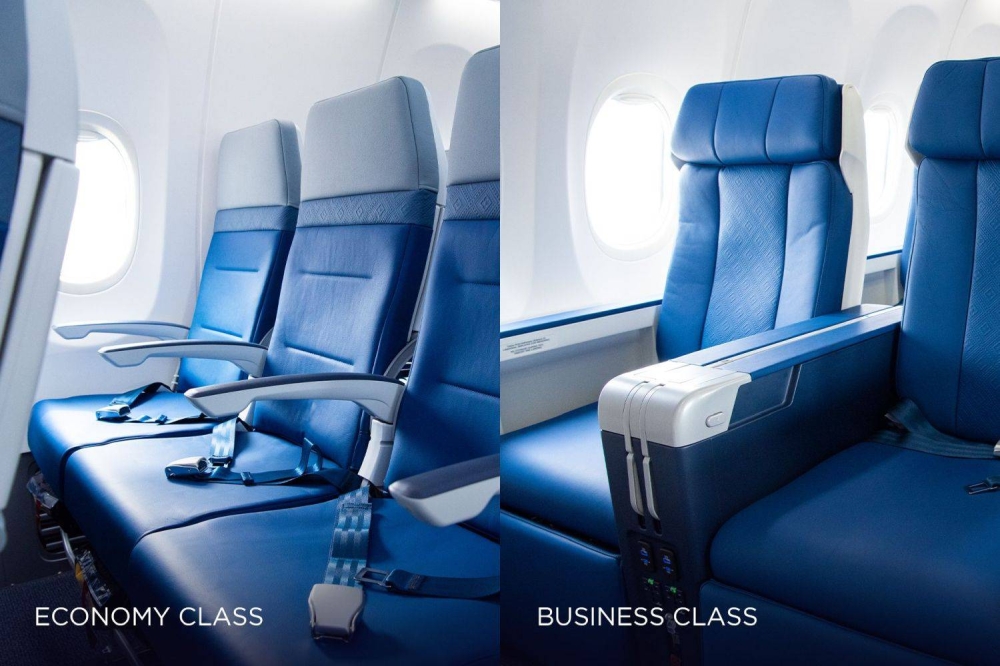
According to the flag carrier, the refreshed 737s will take to the skies by the end of July 2022 and it will be progressively rolled out to more domestic and regional destinations as more of the 38 refurbished aircraft are completed. The new leather seats feature a blue colour scheme which looks brighter than the existing cabin while several elements from the upholstery to the curtains feature batik motif that represents the rich Malaysian heritage.
The 737 remains Malaysia Airlines’ backbone for its domestic and regional routes which are mostly flights under 4 hours. The current refurbishment is for the existing 737-800 Next Generation fleet before its newer 737-8 jets arrive starting next year.
Malaysia Airlines’ Group Chief Marketing and Customer Experience Officer Lau Yin May said “We are thrilled to roll out the newly refreshed B737-800 NG, which will deliver future travel experiences through innovative features from seats to highly customisable inflight entertainment while staying true to our roots by incorporating Malaysian elements in the overall interior cabin design.”
“The cabin refurbishment exercise began in 2021, a bold step taken by the airline in response to feedback and suggestions received through customer surveys and various focus group sessions in 2020 to better understand the needs of our customers. This demonstrates Malaysia Airlines’ commitment to adapt to changing consumer needs and in improving overall customer experience in the post pandemic era. We are pleased to share that our in-flight entertainment is a game changer offering extensive media content, including award-winning local and international movies and TV series, as well as in-flight shopping. All of these are done to give our guests a taste of the warmth and hospitality that Malaysia Airlines is known for whenever they travel with us.”
“It is becoming increasingly important that we do everything with sustainability in mind. The all-new features of our refreshed B737-800 NG fleet will reduce our carbon footprint from the reduction of the weight of each aircraft — with the much lighter seats, use of soft cabin dividers and moving away from seatback screens to offer innovative in-flight entertainment features allowing for wireless streaming on board at their convenience,” she added.
New 737 business class
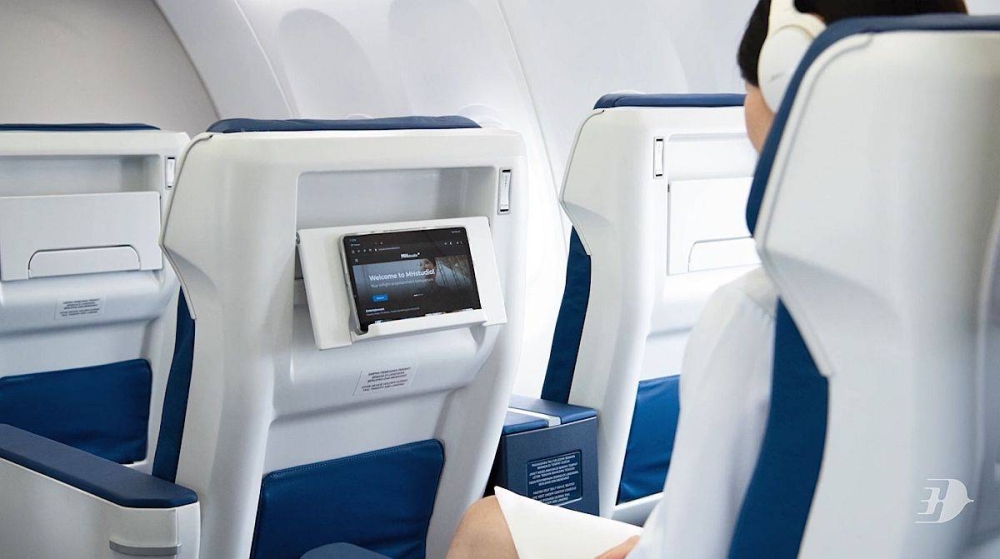
Malaysia Airlines retain the same 2-2 seat configuration for business class but there are now just three rows instead of four, which offers a total of 12 seats. The airline appears to be using Safran’s Z600 recliner seats with “unique cradling motion kinematic” that comes with a 6-way adjustable headrest. Gone are the 10.6″ LCD screens as the seats now feature a hands-free personal device holder to hold your smartphone or tablet during the flight. As shown above, you can tilt the holder so you can still get a good angle even if the passenger in front reclines the seat.
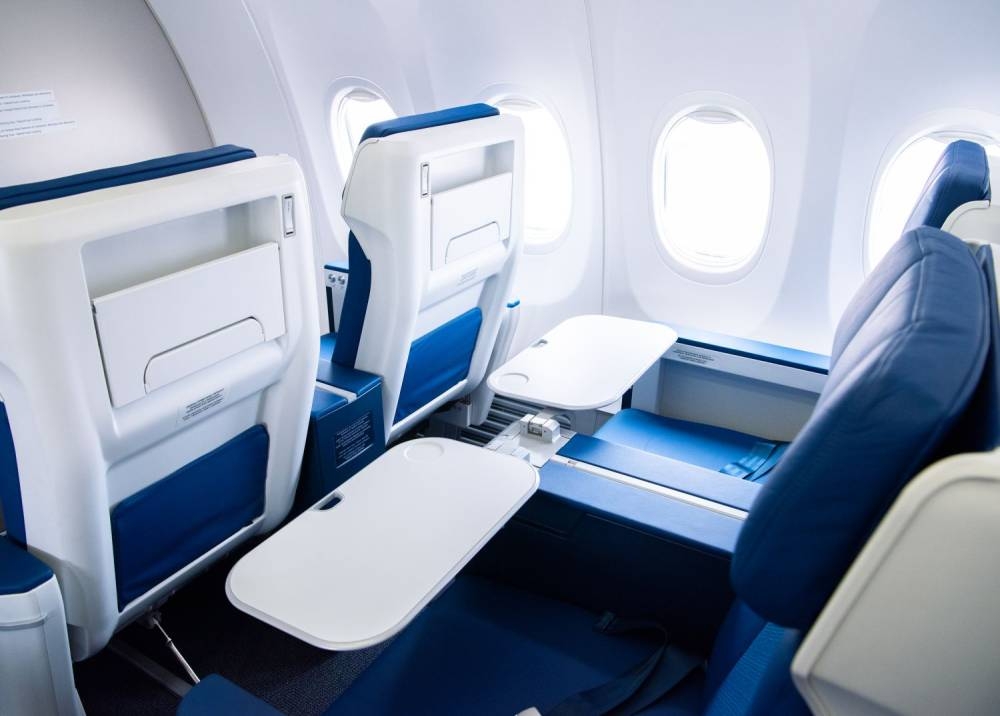
The new business class seats come with a one-piece tray table that’s stowed in the armrest. To keep your devices juiced up, each business class passenger also gets its own AC power outlet that supports various international plugs. There’s also one USB-A and one USB-C port which supports 15W output.
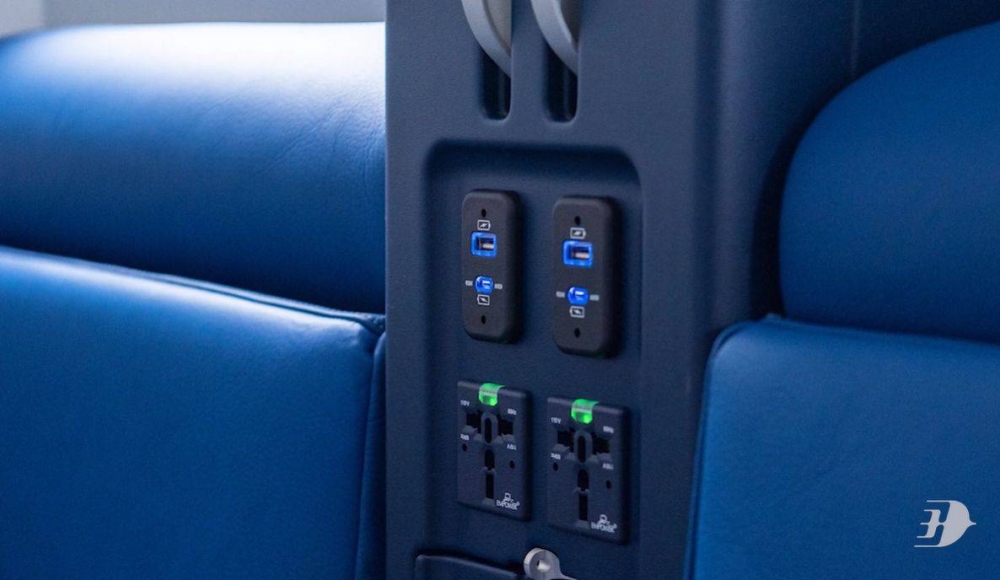
Another noticable change is that the new refreshed cabin uses a soft cabin divider instead of a hard bulkhead to separate business and economy passengers. While this might affect privacy levels between the two seat classes, it does help to reduce weight on the aircraft.
New 737 economy class
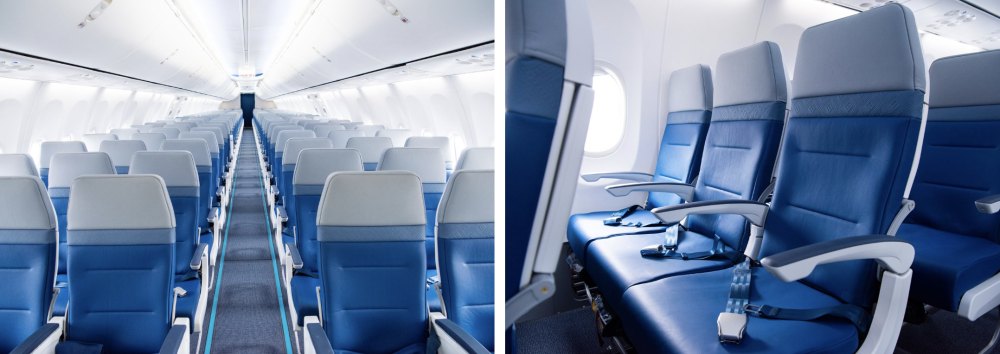
Moving to economy class, you still get the same 3-3 configuration as before but the seats now come with a dual-tone grey and blue colour scheme. It uses lightweight leather with reduced thickness and there’s still no adjustable headrest.
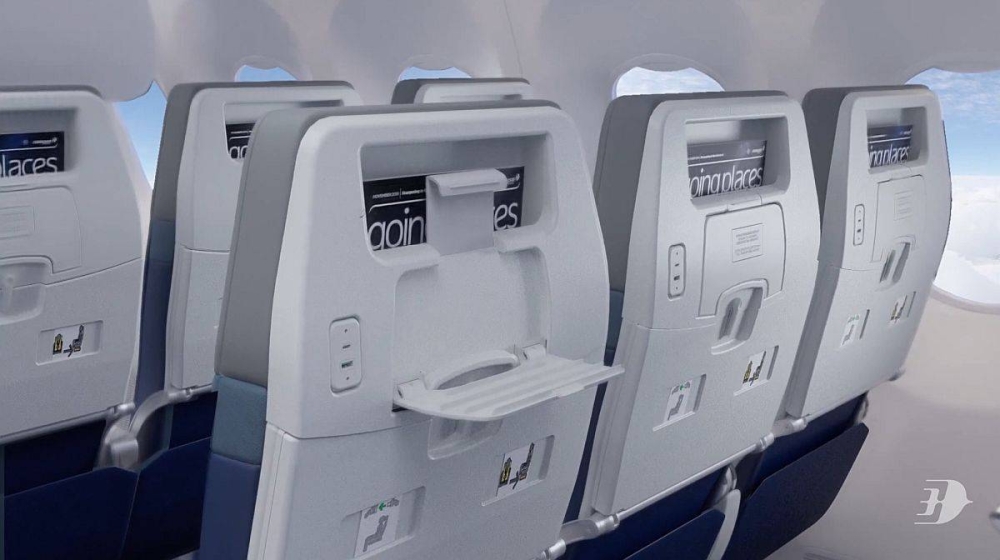
Similar to Business Class, there’s no more built-in video screen but you do get a personal device holder just above the tray table. Each seatback will come with both USB-A and USB-C ports to charge your devices.
Replacing the IFEs is Malaysia Airlines’ MHStudio, a web-based entertainment platform which can be accessed easily without downloading a separate app. Passengers can enjoy movies, music, podcast, books, magazines and games by connecting their own smartphones and tablets to the on-board WiFi. On top of that, the platform also offers duty-free shopping with Temptations and your ordered items will be delivered directly to your seat. If you need something to snack on, you can also order in-flight snacks via MHstudio. Unfortunately, there’s no mention of internet connectivity over WiFi which would be great for passengers to stay connected via instant messaging.
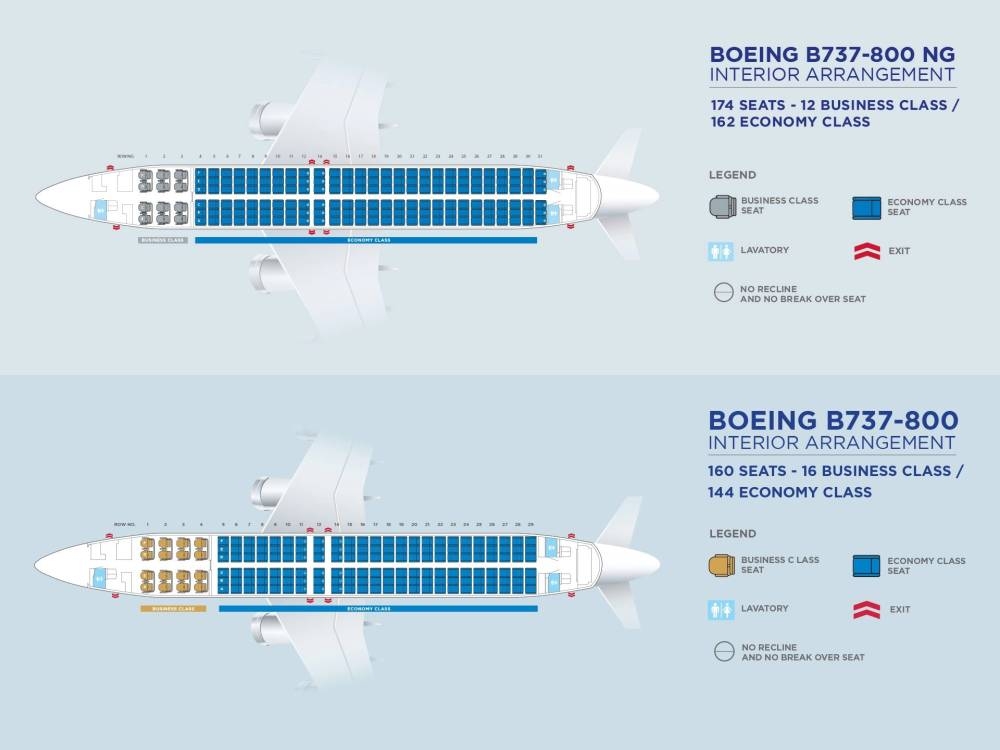
According to Malaysia Airlines, the removal of IFE screens and the use of leaner seats will help to reduce 679kg of weight which translates to a fuel reduction of 91,029 litres per aircraft yearly. Looking at the seat map, the new configuration with thinner seats allows Malaysia Airlines to add 14 more passengers on the 737, which definitely increases the total weight including more luggage. In the older setup, there are a total of 160 seats comprising of 16 in business and 144 in economy. The new refurbished cabin offers a total of 174 seats with 12 in business and 162 in economy.
The seat pitch in the new Business Class is reduced from 42 inches to 39 inches, while Economy seats remain unchanged at 30 inches. However, take note that the seats for the last row in the new economy cabin are marked as “no recline”.
Is the missing IFE screen a deal breaker for travellers?
The controversial move to remove IFE screens can be seen as a downgrade for a full service carrier. As a comparison, Singapore Airlines’ new 737-8 cabin (formerly known as 737 Max 8) feature 10″ HD IFE screens in every economy seat which also comes with adjustable headrests.
However, there are some benefits of implementing a Bring Your Own Device (BYOD) model for in-flight entertainment. Firstly, most users would have their own smartphones and tablets which probably has higher resolution screens than most IFEs installed on planes. Using your own device also means that you can use your own pair of wireless headphones which are definitely better than the bog standard wired headphones provided by the airline.
Since air travel is making a comeback in a post-pandemic era, hygiene still of utmost importance. Using your own device could be seen as a better option as some people might find it disgusting to touch the IFE screens which may not be sanitised regularly after each flight.
Another factor is the rise of video streaming services which allow passengers to download their favourite movies and TV series for offline viewing. Taking a flight involves a lot of waiting time including the commute to the airport and also waiting for the actual boarding of the plane. With your own video streaming subscription such as Netflix, Disney+ Hotstar and more, you can continue your video content from where you left off at any point during your journey. As long as each seat has a reliable USB charging port to keep devices juiced up, I think most people won’t mind not having an IFE screen especially for a short flight.
However, for seasoned travellers, the approach can be seen as a way for airlines to make more money from every flight as they can cram in additional rows of seats. It is no secret that airlines have been hit hard by the pandemic and it is crucial for them to optimise its operations as much as possible. Fortunately, at least on paper, the new economy seats still retain the same pitch of 30 inches, which is still more generous than AirAsia’s 28 inch seat pitch on the A320 but it still falls short compared to Batik Air’s 32 inch on its 737.
Having an IFE screen also provides convenience for families with younger children as they don’t need to fumble with handling extra devices when taking a flight. Furthermore, streaming on your own device can be a challenge for not-so-tech-savvy users as well as passengers who don’t bring a pair of headphones. Travelling itself can be stressful and most people would prefer the convenience of an IFE screen so that they can settle in and make themselves feel at home quickly after boarding. — SoyaCincau






















